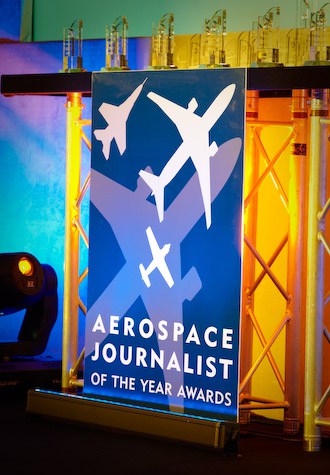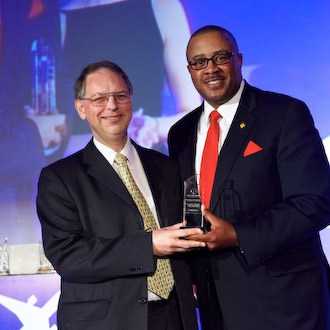
By Louise Mayor
We were delighted to hear that Mark Williamson won “Best Space Submission” in the Aerospace Journalist of the Year Awards 2010, for an article published in Physics World last March.
His victorious piece, Up close and personal, is about how planetary astronomy has developed from a science of entirely remote observation to one of immersive experimentation.
I caught up with Mark to find out his reaction to winning, and his thoughts on writing for Physics World in particular. Also – perhaps with selfish motives – I found out his tips for successful science writing.
Mark said that he was pleased to win the award, and explained that each of the categories is judged by other writers: “So it’s a sort of peer review,” he said.
I asked Mark whether writing for Physics World requires a different approach to some of the other publications he contributes to, such as Engineering & Technology and Space Times. But as he explained, “Physics World has a very different readership from the other magazines I write for, but I have exactly the same attitude to writing as for any other audience.
“It’s clear that a majority of the readership has a professional interest in physics, so you have to find a reason for them to read your article on space technology. You have to make it relevant, or at least interesting, to them.
“On the other hand, many physics graduates and readers of Physics World never work in physics, which is why a few years ago there was a drive to make the magazine more relevant to this audience too. Apart from that, physicists are not only interested in physics…are they?”

Mark Williamson (left) receives his award from David Albritton of ITT Defense & Information Solutions
Tips for aspiring science writers
So, how does one go from an aspiring science writer to an award-winning one? Mark told me that “The art, if there is one, is extracting the essence of the story and presenting it in an accessible way. The challenge is to engage the audience, be true to the science and keep the word count down to what the editor requires – so that’s three challenges at least!”
Some of Mark’s other tips include:
“My advice is always to be highly self-critical and – quietly – critical of others. Read other writers’ work and, rather than simply thinking ‘this must be good because it’s in print’, analyse what is good and bad about the piece. Is it clear, do you learn something from it, does it stray from the point…and is it entertaining – at least on some level?
“You also need to maintain good relationships with editors, and remember you’re only ever as good as your last piece: produce something substandard and they’ll think twice before using you again!
“Finally, try to find someone – a partner or very good friend – who is both capable and willing to critique your work, preferably someone outside the field in which you write. For me, that person – first my girlfriend, now my wife – has served me well for many years!”
Well done Mark, and thanks for the tips.



